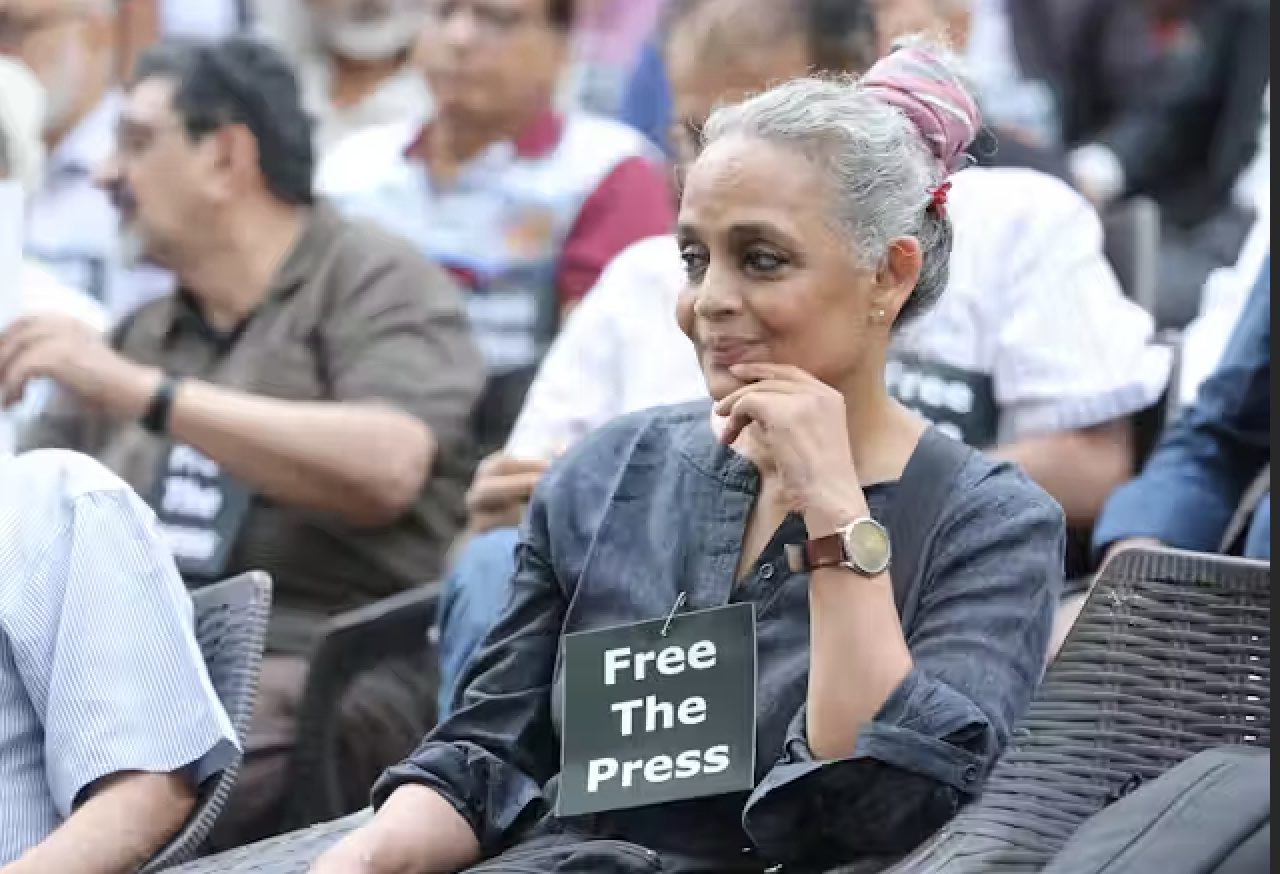Ahmedabad : Arundhati Roy, celebrated for her literary prowess and provocative commentary, has often positioned herself as a voice for the marginalized, wielding her pen to critique systemic injustices. However, her 2002 article, Democracy: Who is she when she’s at home?, published in Outlook magazine, reveals a troubling lapse in journalistic integrity that undermines her credibility. In her account of the horrific Gulbarg Society massacre during the 2002 Gujarat riots, Roy claimed that the daughters of former MP Ehsan Jafri were stripped and burnt alive by rioters. This assertion, presented with her characteristic emotive flourish, was not only inflammatory but also factually baseless, as clarified by Ehsan Jafri’s son, T.A. Jafri, in a letter published in The Asian Age on 20 May 2002. Roy’s failure to verify facts, her refusal to issue a public apology, and her dismissive response to critics expose a pattern of intellectual negligence that demands scrutiny.
The Gulbarg Society massacre was a tragic episode in the 2002 Gujarat riots, where a mob brutally killed Ehsan Jafri and dozens of others. Roy’s article aimed to capture the visceral horror of the violence, but her claim about Jafri’s daughters was a grave misstep. T.A. Jafri’s letter unequivocally stated that all his sisters were safe in the United States at the time of the riots, far from the violence in Gujarat. This was not a minor detail but a significant falsehood that distorted the narrative of an already devastating event. Roy’s assertion was not based on evidence but on unverified assumptions, a reckless choice for a writer of her stature. Such errors are not mere oversights; they misrepresent the suffering of real people and amplify misinformation in an already polarized context.
What compounds the issue is Roy’s response—or lack thereof—to the exposure of her error. While she sent a private email apology to the Jafri family, she stopped short of issuing a public correction. This omission is glaring, given the public nature of her original claim and its potential to shape perceptions of the riots. A private apology, while a gesture, does little to rectify the damage caused by a widely read article. Instead of acknowledging her mistake openly, Roy doubled down, labeling her critics as “communal” and deflecting accountability. This unapologetic stance betrays a prioritization of personal narrative over factual accuracy, a dangerous precedent for someone who commands a global audience.
Roy’s hyperbolic style, often lauded for its emotional resonance, becomes a liability when untethered from truth. Her claim about Jafri’s daughters was not a nuanced interpretation but a fabricated detail that sensationalized an already tragic event. Hyperbole may serve literary ends, but when it distorts reality in the context of real-world violence, it risks exploiting victims’ suffering for rhetorical effect. The Gujarat riots were a complex and deeply painful chapter in India’s history, marked by communal tensions and systemic failures. Misrepresenting such events, even unintentionally, fuels misinformation and undermines efforts to understand and address the root causes of violence.
The impact of Roy’s factual errors extends beyond the immediate context of the article. For readers who value accuracy, her credibility takes a hit. A writer’s authority rests on trust, and when that trust is broken through avoidable mistakes, it erodes the weight of their broader arguments. Roy’s work often critiques power structures and advocates for justice, but these goals are undermined when her assertions lack rigor. Readers, particularly those affected by the events she describes, deserve better than embellished narratives that prioritize drama over truth. In the case of the Jafri family, Roy’s error added unnecessary pain to an already grieving family, forcing them to publicly correct a falsehood about their loved ones.
Moreover, Roy’s dismissive response to criticism reveals an arrogance that ill-serves her role as a public intellectual. By branding her detractors as “communal,” she sidestepped accountability and painted legitimate critique as ideological bias. This tactic not only stifles discourse but also alienates those who might otherwise engage with her ideas. Intellectual honesty demands acknowledging errors, especially when they involve sensitive issues like communal violence. Roy’s refusal to do so suggests a preference for maintaining her image over fostering truth, a choice that weakens her moral authority.
The broader implications of Roy’s lapse are significant in an era where misinformation spreads rapidly. In 2002, when her article was published, the internet was less pervasive, but her words still reached a wide audience through Outlook. Today, such errors could be amplified exponentially, shaping public opinion and inflaming tensions. Writers like Roy, who command influence, bear a responsibility to verify their claims, particularly when addressing volatile issues. The Gujarat riots were a tragedy that demanded careful, evidence-based analysis, not speculative assertions that distort reality.
The factual error in her article, coupled with her failure to publicly correct it, reflects a lapse in judgment that cannot be brushed aside. Writers must hold themselves to a higher standard, especially when their words carry the weight of shaping public understanding. Roy’s refusal to fully own her mistake-opting instead for defensiveness-sets a troubling example for aspiring writers and activists.
In conclusion, Arundhati Roy’s erroneous claim about the Jafri daughters in her 2002 article is a stark reminder of the dangers of prioritizing narrative over fact. Her private apology, while a step, was insufficient without a public correction, and her dismissive response to critics only deepened the damage. For readers who value accuracy, such lapses erode trust and credibility. Roy’s hyperbolic style, while powerful, becomes a liability when it distorts reality, particularly in the context of real-world suffering. As a public intellectual, she must be held accountable for these failures, not out of malice, but to uphold the standards of truth and responsibility that her work claims to champion. The pursuit of justice through writing demands nothing less than rigorous fidelity to facts.





